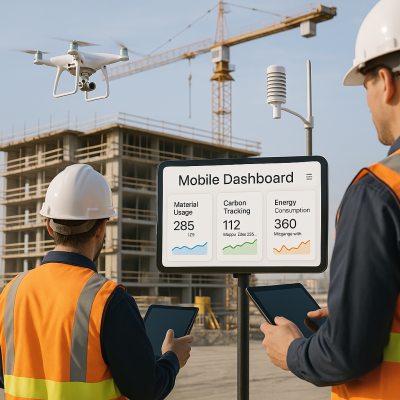
As the Architecture, Engineering, and Construction (AEC) industry grapples with the urgent need to reduce its environmental impact, Artificial Intelligence (AI) and Machine Learning (ML) are emerging as transformative technologies. From energy-efficient design to carbon tracking and adaptive infrastructure, these tools are redefining how professionals approach sustainability across the built environment.
This article explores how AI and ML are shaping the future of AEC in alignment with environmental sustainability, showcasing key innovations, emerging trends, and the opportunities that lie ahead.
The Environmental Imperative in AEC
The built environment contributes to nearly 40% of global carbon emissions. With urbanization accelerating and climate risks intensifying, the need for smart, sustainable solutions has never been more urgent. Traditional methods often lack the agility and data-driven insights required to address these challenges—this is where AI and ML step in.
How AI and ML Are Transforming Sustainability in AEC
Challenges Ahead
While the future is promising, several challenges must be addressed:
Collaboration among industry professionals, data scientists, policymakers, and communities is essential to overcome these barriers.
The Road Ahead: A Vision for 2030 and Beyond
Looking forward, we can expect:
As AI continues to evolve, its role will expand from optimization to innovation—helping humanity not just mitigate harm, but actively heal our relationship with the environment through smarter design and construction.
Conclusion
The fusion of AI, machine learning, and sustainability offers an unprecedented opportunity to reshape the built environment for the better. By embracing these technologies, AEC professionals can lead the charge toward a more resilient, equitable, and environmentally responsible future.
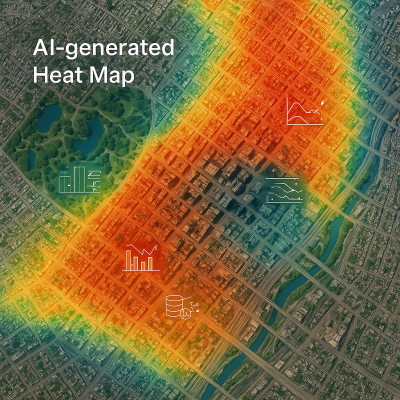
As cities continue to expand, the Urban Heat Island (UHI) effect—where urban areas experience significantly warmer temperatures than surrounding rural regions—poses a growing threat to public health, energy consumption, and environmental sustainability. This phenomenon is caused by dense concentrations of buildings, concrete surfaces, and human activity that absorb and re-emit heat more than natural landscapes.
Addressing the UHI effect has become a priority for urban planners, and artificial intelligence (AI) is emerging as a powerful ally in this mission. From predictive modeling and smart urban design to real-time monitoring and decision-making, AI technologies offer innovative solutions to cool our cities and create healthier, more livable environments.
In this article, we explore how AI is being leveraged to understand, manage, and mitigate urban heat islands.
Understanding Urban Heat Islands
Urban Heat Islands are exacerbated by:
UHI can increase local temperatures by 1 to 7°C (2 to 13°F), intensifying heatwaves, raising energy demand for cooling, and impacting vulnerable populations. AI helps tackle these issues by offering smarter, data-driven responses.
How AI Contributes to UHI Mitigation
AI algorithms, particularly machine learning models, can process satellite imagery, weather data, and urban infrastructure layouts to:
These insights inform targeted interventions, such as where to plant trees or deploy cooling infrastructure.
Using AI-driven simulations, urban planners can model various heat mitigation strategies and assess their impacts before implementation. For example:
Generative AI tools even assist architects in designing buildings and streetscapes that minimize heat absorption.
Smart sensors placed across cityscapes can feed real-time temperature, humidity, and air quality data into AI systems. These systems can:
AI-based dashboards and visualization tools help policymakers and citizens understand UHI risks and the benefits of mitigation strategies. Interactive platforms can:
AI can coordinate multiple urban systems—transportation, energy, water, and waste—in a cohesive heat mitigation strategy. For example:
Case Studies and Real-World Applications
Challenges and Considerations
The Road Ahead
AI’s potential in UHI mitigation is vast, but it must be implemented with inclusivity, sustainability, and ethical oversight. Interdisciplinary collaboration—combining AI experts, urban planners, environmental scientists, and community stakeholders—is key to developing robust and scalable solutions.
With ongoing advancements in AI, IoT, and climate modeling, future cities could become climate-resilient ecosystems that dynamically respond to environmental stressors and protect the well-being of their inhabitants.
Conclusion
Artificial intelligence is not a silver bullet, but when thoughtfully applied, it empowers cities to make smarter, faster, and more effective decisions in their fight against urban heat. By leveraging AI tools for monitoring, modeling, and urban design, we can not only cool our cities but also build more equitable, sustainable urban environments.
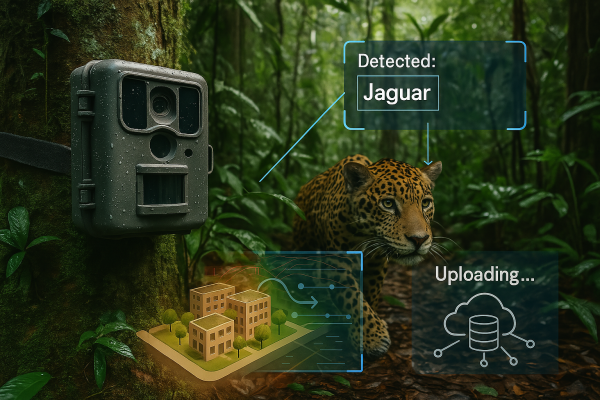
Biodiversity—the immense variety of life forms that populate our planet—is under threat. From habitat destruction and climate change to pollution and poaching, species and ecosystems are disappearing at an alarming rate. Traditional conservation efforts, while crucial, often struggle with limited resources and incomplete data.
Enter Artificial Intelligence (AI) and machine vision: a powerful technological duo capable of revolutionizing how we monitor, protect, and restore biodiversity. These technologies are providing scientists and conservationists with new tools to observe wildlife, map habitats, and predict threats with unprecedented accuracy and efficiency.
In this article, we explore how AI and machine vision are being deployed in biodiversity conservation and what the future holds for these innovations.
Understanding the Role of AI and Machine Vision
Together, they allow machines to recognize species, count populations, track animal movements, and even identify illegal activities such as deforestation or poaching.
Applications of AI and Machine Vision in Biodiversity Conservation
Using thousands of labeled images, machine vision models can be trained to identify plant and animal species with high accuracy. This technology is particularly useful in:
Platforms like Microsoft’s AI for Earth and iNaturalist employ these models to help both experts and citizen scientists catalog biodiversity efficiently.
Machine vision systems analyze satellite and drone imagery to detect changes in vegetation, forest cover, coral reefs, and wetlands. This allows conservationists to:
AI-enabled collar cameras and GPS trackers allow for real-time animal monitoring. Computer vision software interprets camera footage to recognize behaviors like feeding, mating, or distress, which can help tailor conservation efforts more precisely.
AI and vision systems are used in protected areas to scan live video feeds for suspicious human activity or vehicles. They can trigger alerts and deploy drones or rangers in response, significantly reducing poaching incidents.
Example: The nonprofit RESOLVE developed TrailGuard AI, a camera system with built-in AI that identifies human presence and alerts park rangers before poachers can act.
Although not visual, this machine-learning cousin of machine vision analyzes sounds from forests or oceans to detect species such as frogs, birds, or whales—often a better method for elusive or nocturnal species.
AI helps combine visual, acoustic, and environmental data to model biodiversity hotspots, forecast extinction risks, and recommend conservation actions. These insights can guide protected area design and resource allocation.
Benefits of AI and Machine Vision in Conservation
Challenges and Ethical Considerations
The Future of AI in Biodiversity Protection
As AI and machine vision technologies become more accessible and accurate, we can expect to see:
Conclusion
AI and machine vision are transforming biodiversity conservation from a reactive discipline into a proactive, data-driven science. By automating tedious tasks, providing real-time insights, and scaling global monitoring efforts, these technologies are essential allies in the fight to preserve our planet’s ecosystems and the countless species they support. While challenges remain, the integration of AI into conservation promises a smarter, faster, and more effective future for protecting life on Earth.

Water is one of the most vital natural resources on the planet, yet it is increasingly under pressure due to population growth, climate change, urbanization, and pollution. Managing water efficiently—across agriculture, urban utilities, and ecosystems—has become a pressing global challenge.
Enter Artificial Intelligence (AI). By leveraging machine learning, data analytics, and automation, AI offers transformative potential in how we monitor, allocate, and conserve water resources. This article explores how AI is being applied in water resource management and the tangible benefits it offers for sustainable development and environmental protection.
What Is Water Resource Management?
Water resource management involves planning, developing, and managing water resources to meet the needs of agriculture, industry, municipalities, and ecosystems. It includes:
AI’s ability to analyze vast datasets and make intelligent predictions makes it a powerful tool for tackling these tasks with greater accuracy and efficiency.
AI Applications in Water Resource Management
AI models can analyze historical consumption data, climate patterns, and demographic trends to forecast future water demand. This allows utilities and governments to optimize water distribution and storage systems in advance, reducing shortages or oversupply.
Agriculture consumes up to 70% of global freshwater. AI-powered irrigation systems use data from soil sensors, weather forecasts, and crop models to deliver water precisely when and where it’s needed. This reduces waste and boosts crop yields.
Example: AI algorithms in systems like IBM’s Watson Decision Platform for Agriculture optimize water schedules, reducing usage by 20–30%.
Machine learning models trained on hydrological, meteorological, and satellite data can detect early warning signs of floods and droughts. These systems help authorities prepare and respond more effectively, saving lives and property.
AI can process data from sensors that measure pH, turbidity, temperature, and contaminant levels in water sources. Anomalies or trends indicating pollution events (like oil spills or algal blooms) can be detected instantly, enabling faster interventions.
In smart cities, AI algorithms can identify unusual patterns in pressure and flow rates within water pipelines—often early indicators of leaks or pipe bursts. This prevents water loss and reduces infrastructure repair costs.
AI models help simulate the effects of land use changes, climate variability, and development projects on watersheds. This supports better policy decisions for long-term conservation and biodiversity protection.
AI is used to optimize water reservoir levels for hydropower plants, balancing energy production, flood control, and ecological needs. It takes into account river inflows, electricity demand, and environmental constraints.
Real-World Examples
Benefits of AI in Water Management
Challenges and Considerations
The Future of AI in Water Management
As climate change intensifies and population growth continues, the role of AI in water resource management will only become more critical. Future trends may include:
Conclusion
Artificial Intelligence is unlocking new frontiers in the sustainable and equitable management of water resources. By enabling smarter decision-making, predictive insights, and real-time responsiveness, AI tools are helping to secure water for people, ecosystems, and future generations. As we face mounting environmental challenges, embracing AI in water management is not just innovative—it’s essential.
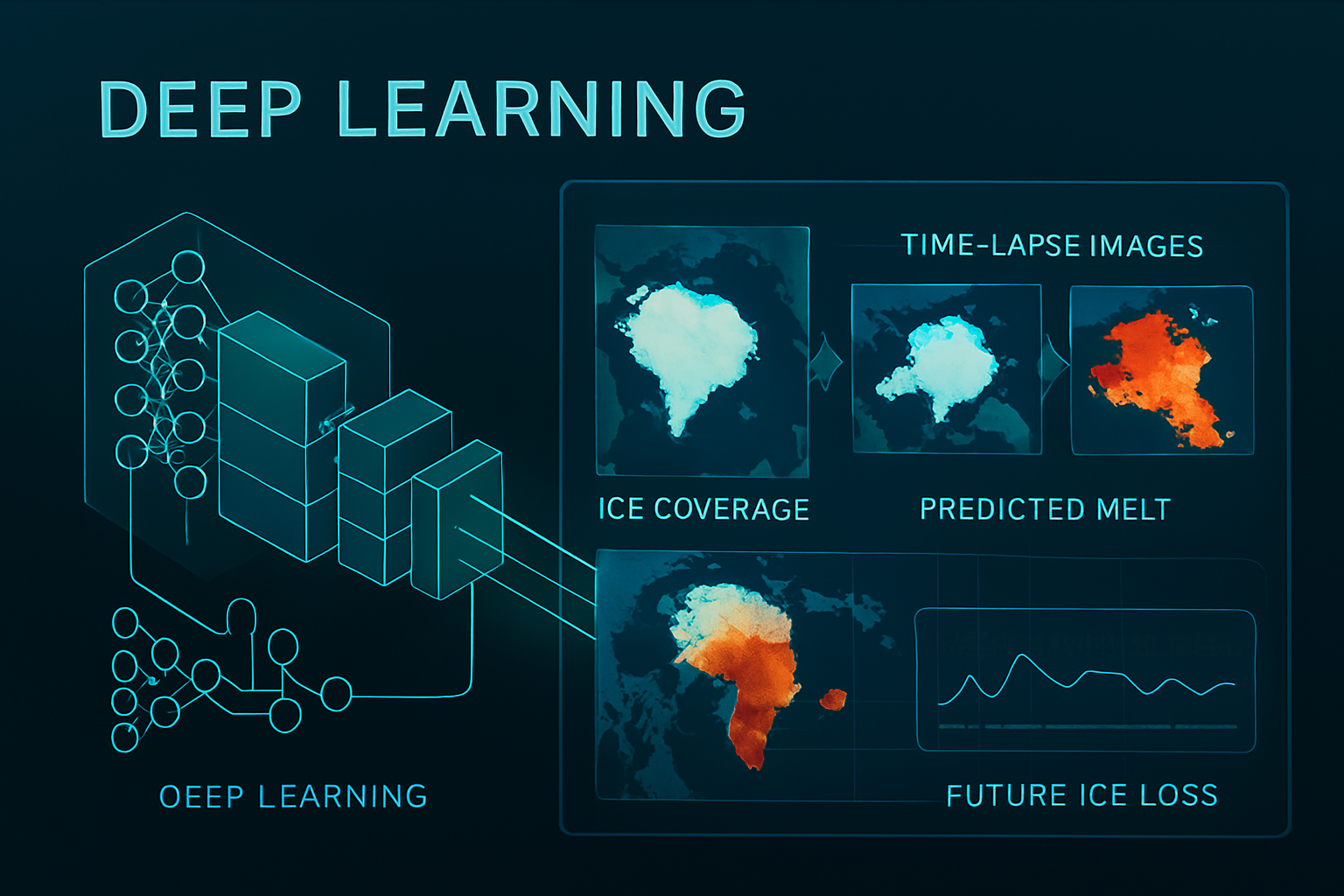
Climate change is one of the most pressing global challenges of our time. Rising temperatures, shifting weather patterns, sea-level rise, and increasing extreme weather events pose significant risks to ecosystems, economies, and human health. Understanding and predicting these changes is essential for effective mitigation and adaptation strategies.
While traditional climate models—based on physical equations and simulations—have long been used to forecast environmental changes, the growing complexity and sheer volume of climate data require more advanced tools. This is where machine learning (ML) comes into play. Machine learning offers powerful methods for uncovering hidden patterns, improving prediction accuracy, and accelerating climate science.
In this article, we explore how machine learning is transforming climate change predictions and helping researchers, policymakers, and communities plan for a changing planet.
What Is Machine Learning in Climate Science?
Machine learning is a subset of artificial intelligence that enables systems to learn from data without being explicitly programmed. In the context of climate science, ML models can:
Applications of ML in Climate Change Predictions
Key Machine Learning Techniques Used
Benefits of Using ML in Climate Science
Challenges and Considerations
Looking Ahead
The future of climate prediction lies in hybrid models that combine the strengths of physical simulations and machine learning. These AI-enhanced climate models will not only improve accuracy but also offer new insights into tipping points, feedback loops, and climate resilience strategies.
Initiatives such as Climate Change AI, the AI for Earth program, and collaborations with major climate research institutions signal a growing commitment to using machine learning for planetary health.
Conclusion
Machine learning is redefining how we understand and respond to climate change. By improving predictions and enabling better-informed decisions, ML models are essential tools in the fight against global warming. As data grows and models evolve, the integration of AI into climate science will be crucial in shaping a sustainable and resilient future.

The global shift towards renewable energy has brought both opportunities and challenges. One of the biggest hurdles is accurately forecasting renewable energy generation, which is inherently variable due to its dependence on weather conditions. Machine Learning (ML) has emerged as a transformative tool in renewable energy forecasting, offering unprecedented accuracy and efficiency.
Renewable energy sources like solar and wind are intermittent, making it challenging to predict energy production levels. Accurate forecasts are crucial for:
Traditional forecasting methods often fall short due to the complexity and variability of weather patterns. This is where machine learning excels.
Machine learning models analyze large datasets to identify patterns and relationships that influence renewable energy production. These datasets may include:
By training on these inputs, ML algorithms can make highly accurate short-term and long-term energy generation predictions.
While ML offers significant advantages, challenges like data availability, model interpretability, and integration with existing systems persist. However, advancements in AI and data collection technologies are steadily overcoming these barriers.
In the future, ML-powered forecasting tools will play a pivotal role in achieving a reliable, sustainable, and carbon-neutral energy system.

The urgent need to combat climate change has led to the development of carbon capture and storage (CCS) technologies, designed to capture carbon dioxide (CO₂) emissions from industrial processes and store them safely underground. Artificial Intelligence (AI) is playing a transformative role in enhancing CCS technologies, improving efficiency, and reducing costs.
AI algorithms optimize the design and operation of carbon capture systems by analyzing data from sensors and simulations. These systems help:
For instance, machine learning models can improve the efficiency of chemical solvents used in capturing CO₂, reducing operational costs and energy requirements.
Continuous monitoring is critical for ensuring the safety and effectiveness of CCS operations. AI-powered tools analyze data from IoT sensors, drones, and satellites to detect potential leaks, monitor pressure levels, and track CO₂ storage integrity.
By using predictive analytics, AI can anticipate issues such as equipment failures or geological instabilities, enabling proactive maintenance and reducing risks.
Selecting suitable sites for CO₂ storage is a complex process requiring geological, environmental, and economic considerations. AI systems process vast datasets, including:
These insights ensure optimal site selection, maximizing storage efficiency and minimizing environmental impacts.
Beyond storage, AI contributes to innovations in carbon utilization—transforming captured CO₂ into valuable products like synthetic fuels, building materials, and chemicals. AI models optimize chemical reactions and process conditions, accelerating the development of sustainable carbon utilization technologies.
AI-driven automation and optimization significantly reduce the costs associated with CCS technologies, making them more accessible for large-scale implementation. By streamlining processes and minimizing risks, AI ensures the scalability of CCS as a critical component of global decarbonization efforts.
AI is revolutionizing carbon capture and storage technologies, making them safer, more efficient, and cost-effective. As the world strives to achieve net-zero emissions, the integration of AI in CCS systems will play a vital role in mitigating climate change and building a sustainable future.AI in Carbon Capture and Storage Technologies
The urgent need to combat climate change has led to the development of carbon capture and storage (CCS) technologies, designed to capture carbon dioxide (CO₂) emissions from industrial processes and store them safely underground. Artificial Intelligence (AI) is playing a transformative role in enhancing CCS technologies, improving efficiency, and reducing costs.
AI algorithms optimize the design and operation of carbon capture systems by analyzing data from sensors and simulations. These systems help:
For instance, machine learning models can improve the efficiency of chemical solvents used in capturing CO₂, reducing operational costs and energy requirements.
Continuous monitoring is critical for ensuring the safety and effectiveness of CCS operations. AI-powered tools analyze data from IoT sensors, drones, and satellites to detect potential leaks, monitor pressure levels, and track CO₂ storage integrity.
By using predictive analytics, AI can anticipate issues such as equipment failures or geological instabilities, enabling proactive maintenance and reducing risks.
Selecting suitable sites for CO₂ storage is a complex process requiring geological, environmental, and economic considerations. AI systems process vast datasets, including:
These insights ensure optimal site selection, maximizing storage efficiency and minimizing environmental impacts.
Beyond storage, AI contributes to innovations in carbon utilization—transforming captured CO₂ into valuable products like synthetic fuels, building materials, and chemicals. AI models optimize chemical reactions and process conditions, accelerating the development of sustainable carbon utilization technologies.
AI-driven automation and optimization significantly reduce the costs associated with CCS technologies, making them more accessible for large-scale implementation. By streamlining processes and minimizing risks, AI ensures the scalability of CCS as a critical component of global decarbonization efforts.
AI is revolutionizing carbon capture and storage technologies, making them safer, more efficient, and cost-effective. As the world strives to achieve net-zero emissions, the integration of AI in CCS systems will play a vital role in mitigating climate change and building a sustainable future.AI in Carbon Capture and Storage Technologies
The urgent need to combat climate change has led to the development of carbon capture and storage (CCS) technologies, designed to capture carbon dioxide (CO₂) emissions from industrial processes and store them safely underground. Artificial Intelligence (AI) is playing a transformative role in enhancing CCS technologies, improving efficiency, and reducing costs.
AI algorithms optimize the design and operation of carbon capture systems by analyzing data from sensors and simulations. These systems help:
For instance, machine learning models can improve the efficiency of chemical solvents used in capturing CO₂, reducing operational costs and energy requirements.
Continuous monitoring is critical for ensuring the safety and effectiveness of CCS operations. AI-powered tools analyze data from IoT sensors, drones, and satellites to detect potential leaks, monitor pressure levels, and track CO₂ storage integrity.
By using predictive analytics, AI can anticipate issues such as equipment failures or geological instabilities, enabling proactive maintenance and reducing risks.
Selecting suitable sites for CO₂ storage is a complex process requiring geological, environmental, and economic considerations. AI systems process vast datasets, including:
These insights ensure optimal site selection, maximizing storage efficiency and minimizing environmental impacts.
Beyond storage, AI contributes to innovations in carbon utilization—transforming captured CO₂ into valuable products like synthetic fuels, building materials, and chemicals. AI models optimize chemical reactions and process conditions, accelerating the development of sustainable carbon utilization technologies.
AI-driven automation and optimization significantly reduce the costs associated with CCS technologies, making them more accessible for large-scale implementation. By streamlining processes and minimizing risks, AI ensures the scalability of CCS as a critical component of global decarbonization efforts.
AI is revolutionizing carbon capture and storage technologies, making them safer, more efficient, and cost-effective. As the world strives to achieve net-zero emissions, the integration of AI in CCS systems will play a vital role in mitigating climate change and building a sustainable future.

Environmental Impact Assessments (EIAs) are crucial for evaluating the potential effects of projects on the environment and ensuring sustainable development. However, traditional EIA processes can be time-consuming, data-intensive, and prone to human error. Artificial Intelligence (AI) is revolutionizing this field by enhancing accuracy, efficiency, and decision-making capabilities.
AI significantly accelerates the process of gathering and analyzing environmental data. Machine learning models process vast datasets, including:
These AI-powered tools can identify patterns and correlations, providing detailed insights into environmental conditions faster than traditional methods.
AI-driven simulations and predictive models assess how projects may affect ecosystems, wildlife, air quality, water resources, and soil. These predictions help stakeholders understand potential impacts before projects are implemented, allowing for proactive mitigation measures.
For example, AI can predict changes in water flow due to dam construction or the loss of habitats caused by urban expansion.
AI eliminates subjective biases and ensures consistent evaluation by relying on data-driven analysis. This leads to more objective and reliable EIAs, helping regulatory authorities make better-informed decisions.
AI tools recommend effective mitigation strategies by analyzing potential impacts and comparing them to similar scenarios. For instance, AI can suggest alternative project designs or locations to minimize environmental damage while maximizing project benefits.
AI automates the creation of comprehensive EIA reports, summarizing findings, visualizing data, and highlighting key issues. This streamlines regulatory compliance and communication with stakeholders, ensuring greater transparency.
Public participation is a vital component of EIAs. AI-powered platforms enhance engagement by creating interactive visualizations and simulations that help communities understand potential impacts and provide feedback.
AI is transforming the field of Environmental Impact Assessments by improving efficiency, accuracy, and transparency. By integrating AI into EIA processes, governments and organizations can ensure sustainable development while safeguarding the environment for future generations.
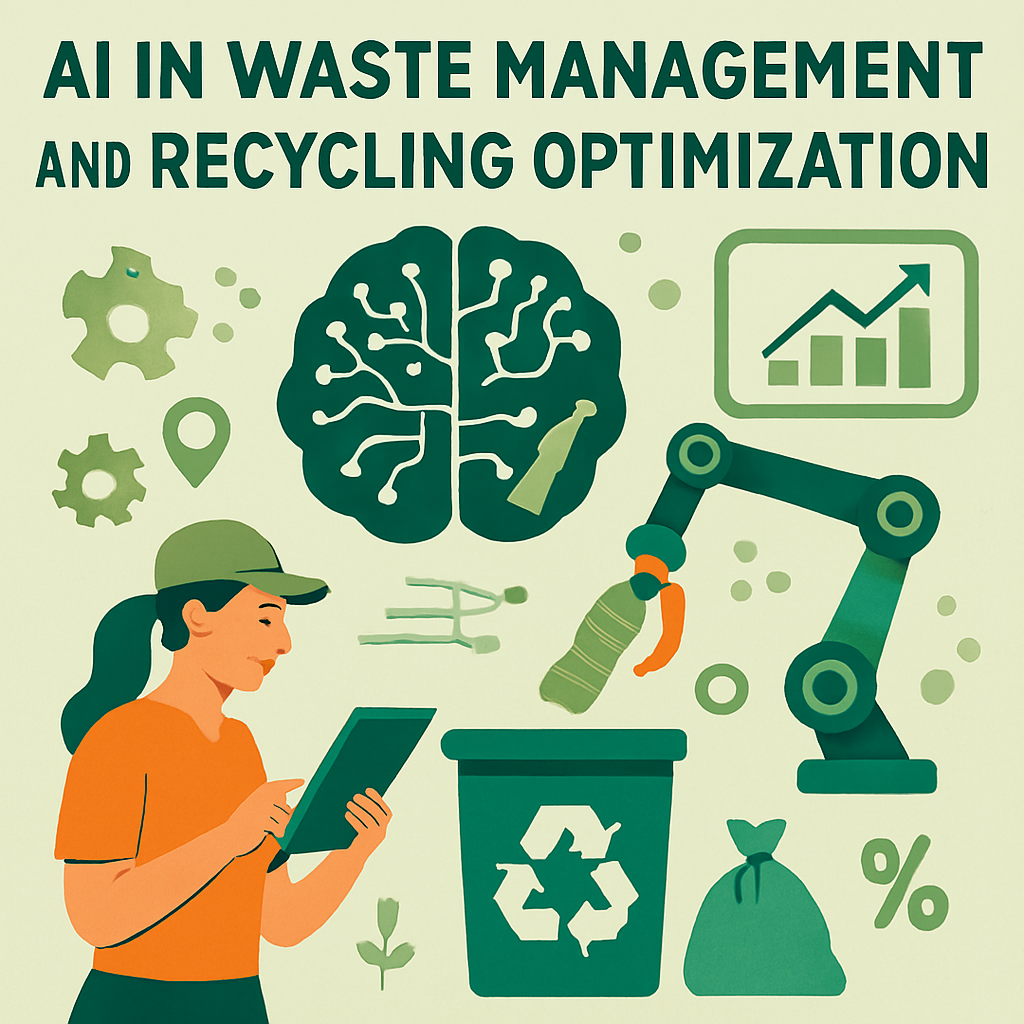
Effective waste management and recycling are essential for addressing the global waste crisis and promoting sustainability. Artificial Intelligence (AI) is revolutionizing the waste management sector by optimizing operations, improving recycling efficiency, and enabling smarter decision-making.
One of the most significant challenges in recycling is the accurate sorting of waste. AI-powered systems equipped with sensors and cameras can identify and categorize different types of materials, such as plastics, metals, glass, and organic waste.
Machine learning algorithms analyze images of waste items on conveyor belts in real time, ensuring accurate sorting and minimizing contamination in recycling streams. Robots equipped with AI can then pick and sort these materials with precision.
AI is improving waste collection by predicting when bins will reach capacity. IoT-enabled smart bins equipped with sensors communicate fill levels to AI systems, which then optimize collection routes for waste trucks. This reduces fuel consumption, lowers operational costs, and minimizes carbon emissions.
AI tools are helping to maximize recycling efficiency by analyzing data to identify bottlenecks in recycling processes. These tools optimize operations in recycling facilities, such as shredding, melting, or chemical processing, ensuring minimal waste and maximum recovery of valuable materials.
AI models detect and remove contaminants that degrade the quality of recyclable materials. By identifying impurities early in the recycling process, AI helps ensure higher-quality outputs, making recycled materials more marketable and sustainable.
AI-powered platforms engage communities by providing real-time feedback on recycling habits. For instance, apps can scan items to determine if they are recyclable and provide instructions on proper disposal, encouraging better waste management practices.
AI is opening the door to innovative waste management solutions, such as using advanced robotics to handle hazardous materials or creating circular economy systems where waste is transformed into valuable resources.
AI is transforming waste management and recycling by improving efficiency, reducing costs, and fostering sustainability. With these advancements, we can move closer to a zero-waste future, addressing environmental challenges and promoting a cleaner, greener planet.
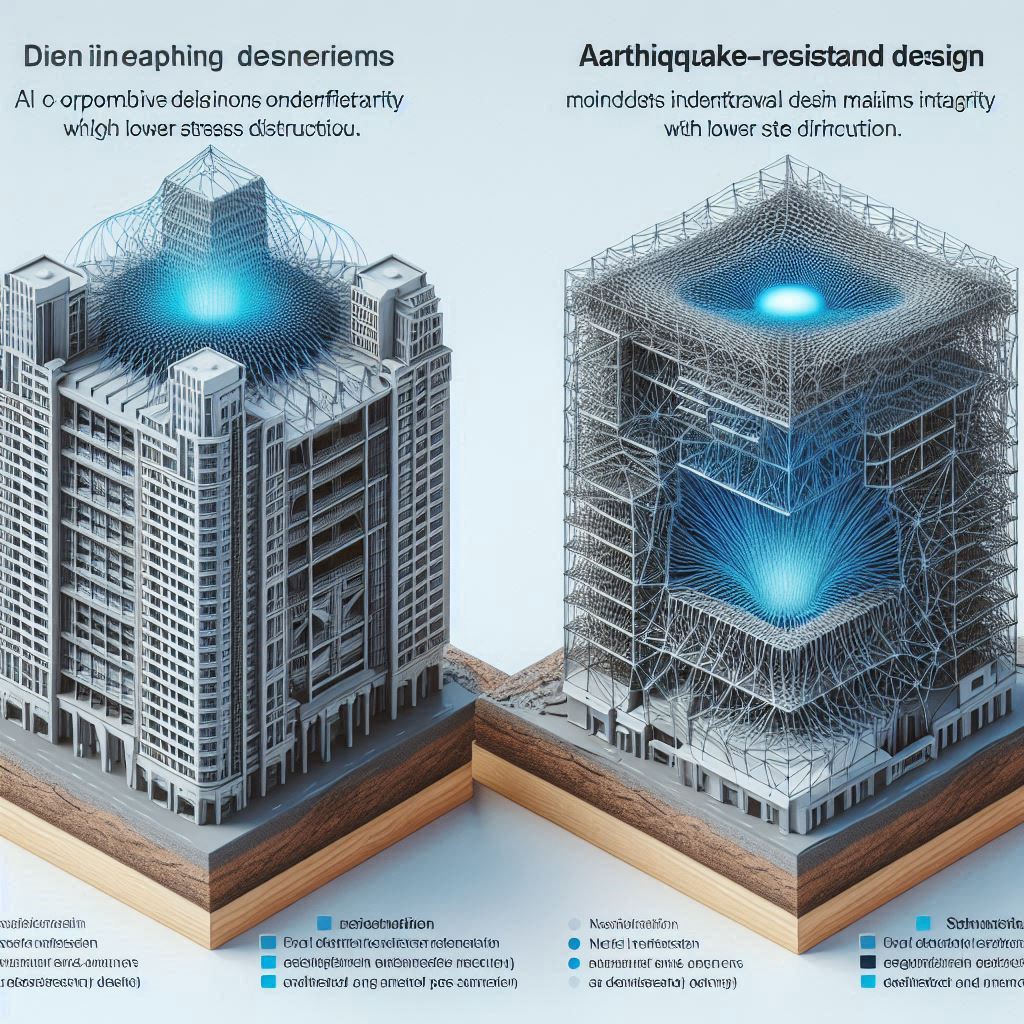
Sustainable architecture focuses on designing buildings that minimize environmental impact while maximizing energy efficiency and resource utilization. Artificial Intelligence (AI) is revolutionizing sustainable architecture by providing innovative tools to optimize design, improve energy efficiency, and ensure environmental harmony.
AI-powered design tools use algorithms to create optimized building layouts that reduce energy consumption and enhance sustainability. These tools analyze factors like sunlight exposure, wind patterns, and thermal insulation to generate designs that maximize natural ventilation and lighting.
For example, AI can simulate how a building will interact with its environment throughout the year, enabling architects to make data-driven decisions.
AI helps architects design buildings that consume less energy by:
By analyzing historical and real-time energy usage data, AI enables the creation of energy-efficient systems tailored to specific buildings.
AI systems analyze material properties and lifecycle impacts to recommend sustainable and cost-effective materials. These tools ensure that buildings are constructed using renewable, recyclable, and energy-efficient materials.
AI also optimizes resource allocation during construction, reducing waste and minimizing environmental impact.
AI is integral to creating “smart buildings” that monitor and adapt to occupant behavior in real time. These technologies adjust lighting, temperature, and ventilation based on usage patterns, ensuring maximum comfort with minimal energy use.
Smart buildings powered by AI also support predictive maintenance, reducing downtime and extending the life of building systems.
AI tools provide architects with insights into how their designs will affect the local environment. By analyzing factors like water runoff, air quality, and biodiversity, AI ensures that buildings coexist harmoniously with nature.
AI supports urban planners in designing sustainable cities by analyzing population growth, transportation systems, and resource distribution. This holistic approach ensures that green buildings contribute to a larger, sustainable urban ecosystem.
AI is driving a new era of sustainable architecture by empowering architects to design green buildings that are energy-efficient, environmentally friendly, and resource-conscious. As AI technology continues to evolve, it will play a critical role in shaping the future of sustainable cities and promoting global environmental stewardship.